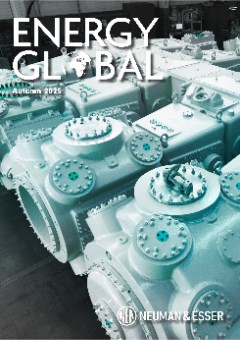Editorial comment
Autumn is creeping its way to the UK – the rainy weather, slightly colder temperatures, and the beginning of darker evenings are all signs that the end of the year is coming.
Register for free »
Get started now for absolutely FREE, no credit card required.
Grid stability will remain crucial in helping provide energy in periods of high demand. One way this can be achieved is the use of battery storage and co-location with solar and wind farms to help with grid flexibility and security.
The UK in particular has made a recent push towards shining a spotlight on the future role of energy storage. For example, EDF and Ampeak Energy have signed a long-term agreement to optimise the AW1 battery energy storage system in South Wales. The 120 MW/240 MWh facility will store electricity and release it to the grid during periods of high demand, supporting the balance of supply and demand while helping the UK reach emissions targets.1 Moreover, Equitix has formed a consortium with Aware Super and the National Health Fund to invest £500 million into a new UK battery storage platform, Eelpower Energy. The business will build, own, and operate grid scale battery storage assets and aims to deliver over 1 GW of new battery storage capacity for the UK grid in the coming years.2
More widely, 3E has completed a milestone in the flexibly utility scale energy storage (FULLEST) research project, delivering a digital twin technology for battery energy storage systems, with Vrije Universiteit Brussel. The project addresses critical challenges in the expanding European energy storage market.3
Another sector which the UK is investing in to help achieve net zero is floating offshore wind. While newer than fixed foundation technology, the floating offshore wind market has grown in popularity in recent years. The UK is already well-established as a leader in this; floating turbines in British seas alone open up a potential resource of over 1500 TWh/y.4 In addition, building out just the UK pipeline of floating projects needed to reach net zero could have the potential not only to help meet energy needs, but also contribute £25 billion to the UK economy and employ 100 000 people.4
The Autumn issue of Energy Global touches on this developing technology, with multiple articles from industry leaders. DNV provides an overview of the evolution of floating offshore wind, from concept to development. The article considers some potential barriers to scaling up floating offshore wind, and looks at factors that might help secure a floating future. Green Volt outlines the importance of floating offshore wind for the UK’s renewable energy targets, drawing on how projects such as Green Volt can help pave the way for future projects. Finally, MintMech and Reflex Marine discuss a new anchor system that tackles both the technical obstacles and the practical and economic realities of scaling up floating offshore wind installations.
Whichever direction floating offshore wind takes, Energy Global will be with you every step of the way. I hope you enjoy the issue.
References
- ‘EDF and Ampeak Energy sign a long-term agreement to optimise flagship AW1 battery project’, EDF, (1 September 2025), www.edfenergy.com/media-centre/edf-and-ampeak-energy-sign-long-term-agreement
- ‘Equitix-led consortium with Aware Super and the National Wealth Fund launches a £500 million platform to build, own, and operate UK battery storage assets’, Equitix, (27 August 2025), equitix.com/news/equitix-led-consortium...
- ‘FULLEST project delivers advanced digital twin technology for Battery Energy Storage Systems (BESS)’, 3E, (18 August 2025), www.3e.eu/resources/news/fullest-project-delivers...
- ‘Floating Wind: Anchoring the next generation offshore’, UK Floating Offshore Wind (FLOW) Task Force Phase 2, (8 October 2024), renewableuk.com/media/scccdrxe/floating-offshore-wind-2050-vision-final.pdf


